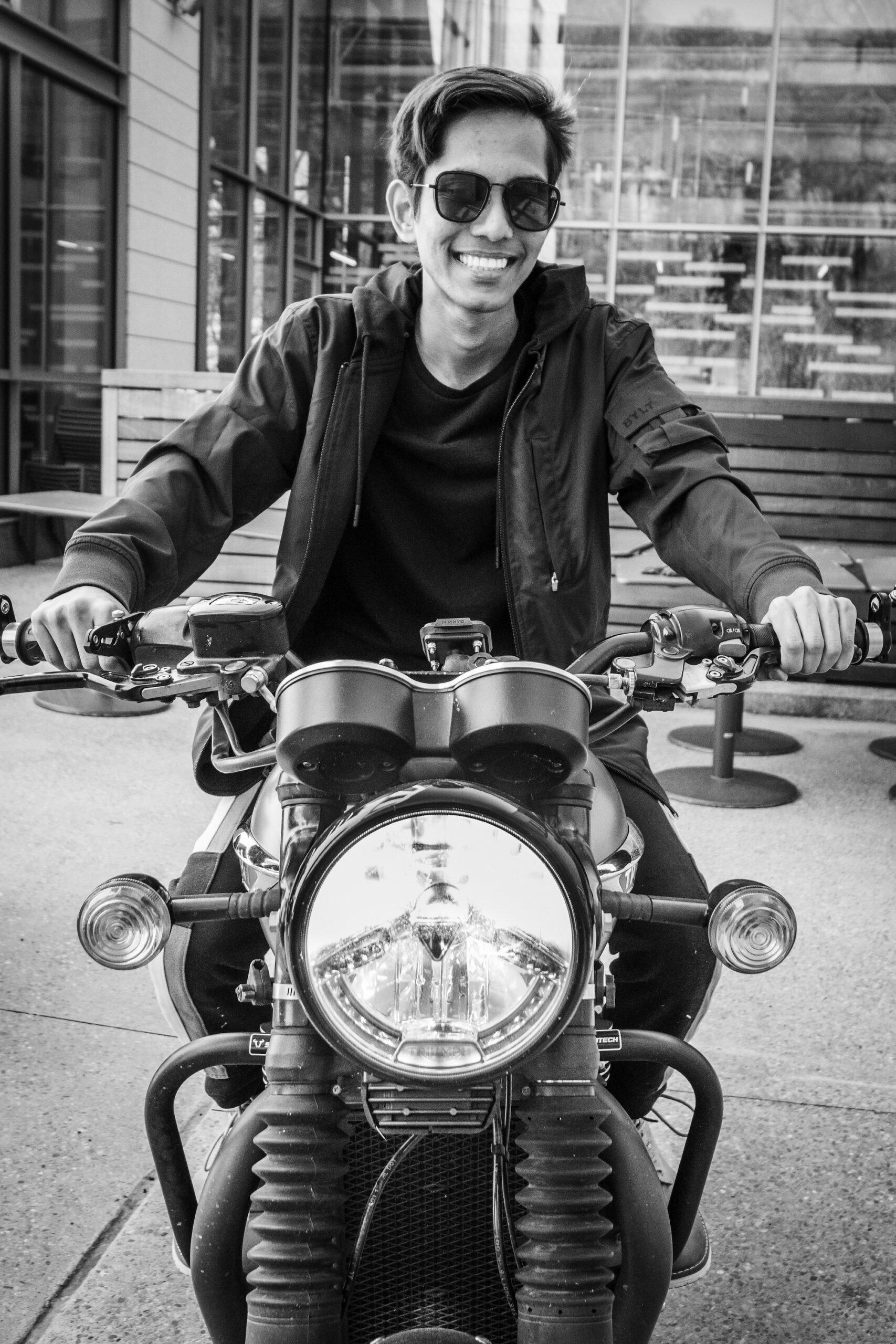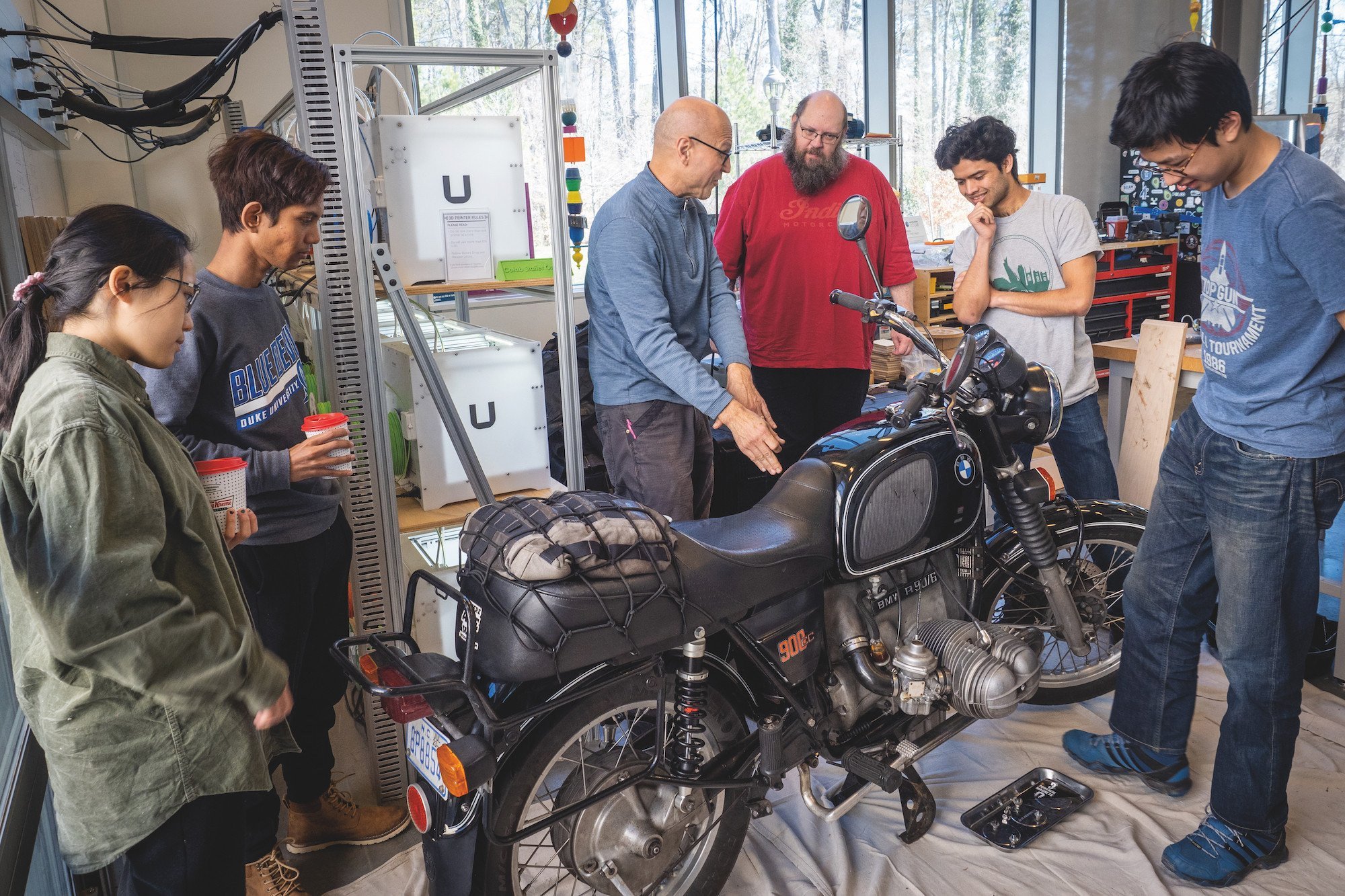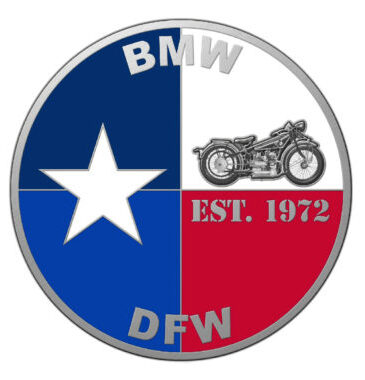Photos by Bill Snead
Perhaps there’s a little moto-cultural myopia going on that causes us to consider “motorcycle training” as something that only involves actually riding the motorcycle—learning to do it or getting better at it. Learning how to work on your motorcycle is also a valuable skill, and one that is quickly and easily developed with hands-on instruction.
Scott Lindroth spends the vast majority of his days teaching the intricacies of music composition to graduate students at Duke University. When spring break rolls around in March, he usually uses that week to relax, work on some of his own compositions or tend to his house and family. In 2023, however, he had an idea on how to get folks excited about motorcycles in a unique way—by having them do his routine maintenance for him!
All kidding aside, Scott saw Duke’s “Spring Breakthrough” program as a way to share his passion for motorcycles and wrenching on them with students who were unable (or unwilling) to get away from the Durham, North Carolina campus. Duke offers informal project-based weeklong courses to help these students pass their time constructively, if they so desire, and after writing up a proposal and sample syllabus, Scott got the green light to offer his “Motorcycle Revival: Repairing and Maintaining a Classic Bike” course.

“One of the things I love about teaching music is that it requires practical, hands-on skills—I play piano—as well as technical and historical knowledge. I can almost convince myself that working on a bike is analogous to my work in music. I suspected students were hungry for experiences that put them literally in touch with the physical world—something fun, satisfying and indisputably cool that would also allow them to experience the outcome of their work,” Scott said. “I thought of Motorcycle Revival as a way to share my way of thinking with students and convey the joy—and frustration—that comes from focused work on problems both large and small. What could be better for that than wrenching on an antique motorcycle?”
Scott even had the perfect bike in mind: the 1975 R 90/6 he purchased from me in 2022. The R 90/6 dates from an era when BMW Motorrad assumed a bike’s owners would do their own maintenance, and its owner’s manual has instructions for valve adjustments, cable replacement and adjustment, fork oil changes, carburetor adjustment, master cylinder repair and other jobs often relegated to professional service centers today. It even includes a detailed wiring schematic as well as exploded diagrams for the carbs, clutch and gear box. It was a different time.
Looking back at this different time in motorcycle manufacturing is a big part of why Scott bought the bike. He’d been riding for about six years at the time, but he was as in love with riding as any of us who ever wanted to get into bikes more deeply. The airhead was the perfect vehicle to accomplish his goal. He spent most of his free time in the summer—when he wasn’t riding his beloved Triumph T120 Bonneville, that is—working on the R 90/6, starting with rebuilding the forks, front brake caliper and master cylinder. He installed a headlight and turn signals, fixed exhaust leaks, rebuilt the carbs and adjusted the valve clearances. It was his entry into motorcycle repair, and he loved every second of it.

For the spring break course, Scott enlisted the help of myself as well as his friend and colleague, Duke staff photographer Bill Snead, who brought in his 1981 R 65 for students to work on. Both Scott and Bill also added their late-model Bonnevilles to the mix to ensure everyone would be busy.
“In a high-stakes academic environment, it’s often difficult to get students to risk failing at something new, which of course can be a great way of learning,” Bill said. “The general level of excitement for the material, the willingness to get hands-on, the attentiveness, the level of questioning—all this was encouraging for me. This class kind of took [the students] out of their comfort zones, but in a way they all seemed to enjoy.”
An unexpected element of drama arose shortly before the course was to start: The R 90’s clutch suddenly failed. Scott spent a frantic week replacing the plates and the clutch release mechanism and got the bike running again the day before the class started. So much for his idea that wrenching is relaxing!
Six students signed up: three from India, one from Ethiopia, one from Japan and one from nearby Cary. Most of the students had never held a wrench before, and three of them do not even drive. They spoke of wanting to “work with their hands,” to “gain some life experience” and to “try something completely different.” Of course, they all thought “motorcycling is cool, but a little scary.”

The class set up shop in the Makerspace at Duke’s Rubenstein Arts Center. The facility has two roll-up doors, making it easy to move bikes in and out, as well as large worktables where tools, fluids and parts stayed organized. An adjacent classroom was an ideal space to pore over Clymer manuals and watch parts of some terrific Boxer2Valve videos on YouTube to better understand each task.
Over the week, the students performed routine maintenance chores such as replacing fluids and filters, checking and replacing brake pads, bleeding brake lines, cleaning and adjusting the chain on the Bonnie, and adjusting valve clearances on the two airheads. Scott had the students remove and reassemble wheels and exhaust silencers to help them become more familiar with the bikes, and what impressed me most was how eagerly these elder teenagers and young 20-somethings dug into each task, unconcerned even with whether they might get dirty.
“It’s not a stretch to say that not only have the students not used or owned a lot of tools, but it’s likely their parents haven’t, either,” Bill said. “For many, just learning ‘righty-tighty, lefty-loosey’ was an important step.”
Scott added, “They were into it; they were respectful, humble, even self-deprecating, and funny. It was clear this was an entirely new experience for them.”

I missed the animated discussion of Matthew Crawford’s book Shop Class as Soul Craft, which advocates working with hands and tools not only as an honorable alternative to the “knowledge work” dominating university curriculums, but also as an endeavor requiring critical thinking and analysis on top of manual dexterity. We took in videos by moto vloggers “Itchy Boots” and “Doodle on a Motorcycle” to expose the students a variety of riding styles, ranging from Itchy Boots’ hardcore off-road adventures to Doodle’s evolution from a novice buying her first bike to an experienced touring motorcyclist intent on widening her own knowledge. Their channels also make it clear that motorcycling is not just a man’s endeavor.
“The conversations around the videos and book excerpts, and even when relaying our own riding experiences, were thoughtful and refreshingly challenging as well. One student wondered about the consequences of putting the wrong fluid in a particular system,” Bill said. He also noted how well all the students responded to Itchy Boots (whose real name is Noraly Schoenmaker), Doodle, and Elspeth Beard.
To show more of the breadth of motorcycling experiences, I showed them footage from the first Motorrad Fest’s police rodeo and the semi-finals from the 2022 GS Trophy Qualifier at the BMW Performance Center. Bill shared his amazing story of setting a world land speed record at the Bonneville Salt Flats about 10 years ago. He purchased his R 65 with an eye on the 650 PPP title, and he showed the process of disassembling and reconditioning the engine along with footage from the Salt Flats during his successful record attempt.

All three of us noticed one student in particular, a young women from India, who really connected with the hands-on nature of motorcycles. “Early on, it was obvious she really saw how everything was supposed to work together, Bill said. “She did the valves on my R 65, and the bike never ran so smooth!” Bill couldn’t bring himself to re-do them after watching her complete the adjustments in one efficient stretch covering both intake and exhaust for both cylinders. “She really had the touch! I need to track her down and see if she’ll do that again—maybe she’ll be on my crew if I return to the salt flats with the R 65.”
“It helped to get these young men and women to see that a motorcycle isn’t a black box,” Scott said. “Connecting their hands-on labor to the joys of riding a motorcycle was all part of the experience, and I think it really helped them get excited about motorcycling.”
Given that women outnumbered men in the course, it wasn’t hard to draw the conclusion that motorcycling is not only a man’s pastime, but that anyone can wrench and ride, even, as Bill calls himself, the “inseam challenged.”

During the week, students sat on the bikes, started them up and gave the throttle a few revs to whet their appetites. The final class ended with Scott and Bill giving two-up rides on the very bikes the students worked on all week; saying they loved it is understating their excitement. At least one was soon on Craigslist looking for a bike, and the others were smitten; Bill recalled that one of the students brought in an actual print magazine to talk about the Royal Enfield 350 Meteor, which he was considering for his first bike, showing how excited they were about the concept of riding.
After reflecting on the entire week, Scott said, “I wish I’d devoted more time to discussing Crawford’s book, and it would have been interesting to tackle a more complex project, like rebuilding carburetors. Maybe next time we’ll get a half-dozen carbs and do those!”
As far as Scott’s R 90/6 goes, “Mechanically it’s great, but I’ve been dealing with electrical gremlins,” he said. “It reminds me that if you want to dive into the deep end and take on major maintenance jobs, old bikes really are the way to go, provided you can get the parts. There’s a lot to learn, but everybody should be able to deal with tires, brakes, cables, filters, and the chain.”

Bill agreed, saying, “The best mechanic, even without any experience, will most likely end up being YOU! Most motorcycles make it comparatively easy to access the innards compared to cars, so the intimidation factor is relatively low. Anybody can start with basic tools from any big-box hardware store, and I cannot overemphasize the value of YouTubers who share how-tos and gracious forum members who share their experiences and tips, many of which they probably learned the hard way.
“There’s absolutely no reason not to go for it nowadays. Reassembling some vital and scary parts and then hearing your bike run—or not—afterwards is a huge reward, and such an important and satisfying human experience.”
A trio of old and possibly jaded Beemer fans figured there couldn’t be a better outcome from the course than teaching a small degree of self-reliance and possibly bringing new riders into the sport.



